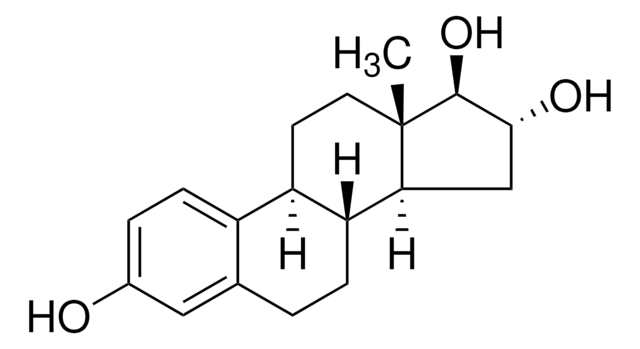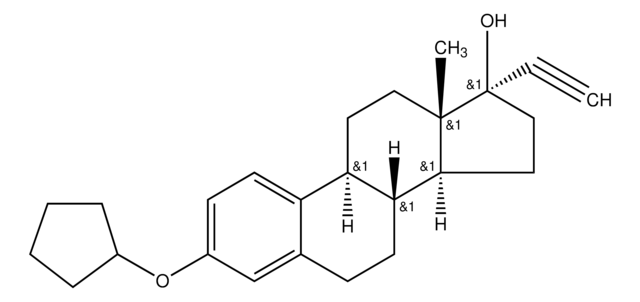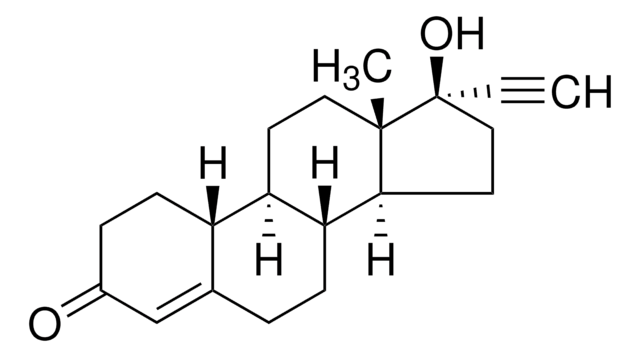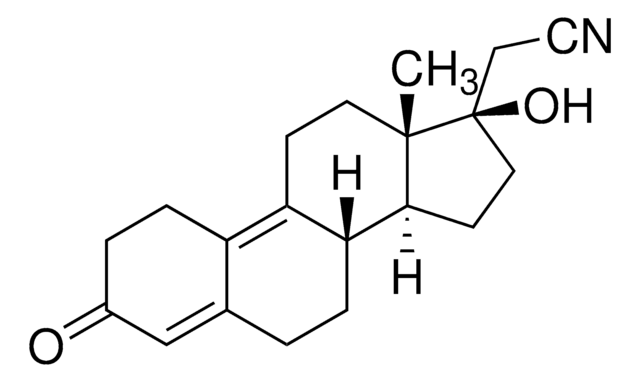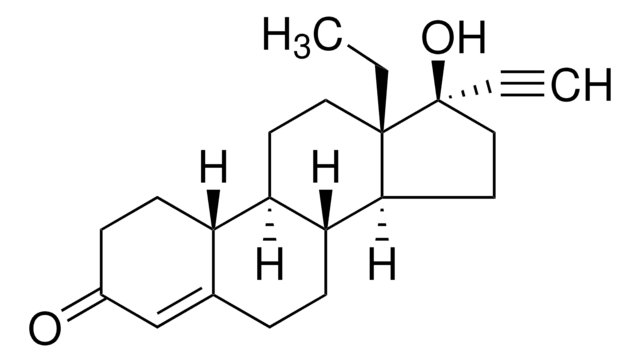E4876
17α-Ethynylestradiol
≥98%
Synonym(s):
17α-Ethynyl-1,3,5(10)-estratriene-3,17β-diol, 19-Nor-1,3,5(10),17α-pregnatrien-20-yne-3,17-diol, Ethinylestradiol
About This Item
Recommended Products
biological source
synthetic
sterility
non-sterile
Assay
≥98%
form
powder
mp
182-183 °C (lit.)
solubility
ethanol: 50 mg/mL, clear, colorless to faintly yellow
shipped in
ambient
storage temp.
room temp
SMILES string
[H][C@]12CC[C@@]3(C)[C@@]([H])(CC[C@@]3(O)C#C)[C@]1([H])CCc4cc(O)ccc24
InChI
1S/C20H24O2/c1-3-20(22)11-9-18-17-6-4-13-12-14(21)5-7-15(13)16(17)8-10-19(18,20)2/h1,5,7,12,16-18,21-22H,4,6,8-11H2,2H3/t16-,17-,18+,19+,20+/m1/s1
InChI key
BFPYWIDHMRZLRN-SLHNCBLASA-N
Gene Information
human ... ESR1(2099)
rat ... Afp(24177) , Esr1(24890) , Shbg(24775)
Looking for similar products? Visit Product Comparison Guide
General description
Application
Biochem/physiol Actions
Signal Word
Danger
Hazard Statements
Precautionary Statements
Hazard Classifications
Acute Tox. 4 Oral - Aquatic Chronic 1 - Carc. 2 - Repr. 1A
Storage Class Code
6.1C - Combustible acute toxic Cat.3 / toxic compounds or compounds which causing chronic effects
WGK
WGK 3
Personal Protective Equipment
Choose from one of the most recent versions:
Already Own This Product?
Find documentation for the products that you have recently purchased in the Document Library.
Customers Also Viewed
Our team of scientists has experience in all areas of research including Life Science, Material Science, Chemical Synthesis, Chromatography, Analytical and many others.
Contact Technical Service

